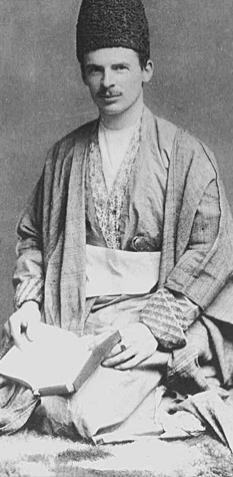
Browne Archive Project
In view of the seminal role played by Edward Granville Browne (1862–1926) in promoting Persian studies and setting the field on a firm scholarly basis in English academia, it is appropriate for the Centre for Persian Studies at Pembroke to build on his legacy and make materials from his archive in the College’s possession more widely accessible. Although from 1902 onwards E.G. Browne was the Sir Thomas Adams’ Professor of Arabic, his main academic achievements were overwhelmingly in Persian, including most notably his four-volume Literary History of Persia, his editions of seminal Persian texts with the Gibb Memorial Trust, his publications on the contemporary political situation in Iran and his enthusiasm for the social and religious phenomenon of the emerging Babi religion and its later Baha’i offshoot.
Browne became a Fellow of Pembroke in 1887, having read Natural Sciences and Medicine as an undergraduate but having already developed a strong interest and competence in ‘Oriental’ languages – Arabic, Persian, Turkish and some ‘Indian’ as he put it. Before returning to Cambridge in 1888, he spent his famous Year amongst the Persians, which he described in his first book, published in 1893. The original diaries are kept in Pembroke and have recently been digitised. This is the first of several such projects, to make available some of the unique primary source material to a wider spectrum of specialists, first of all historians, especially of the Great Game period, as well as historians of Persian literature and culture. Among the papers in the Browne archive are his voluminous correspondences with European and Iranian scholars, his views and reports on the political developments in Persia, particularly during the period of the Constitutional Revolution of 1905 onwards, and his notebooks and lectures on Persian literature and manuscripts. These documents allow an insight into the life and opinions of one of the great pioneering figures in Persian studies.
The video below explains the diaries and the recent project in greater depth, with contributions from the photographer, conservator and from Charles Melville, Professor of Persian History at Pembroke.
